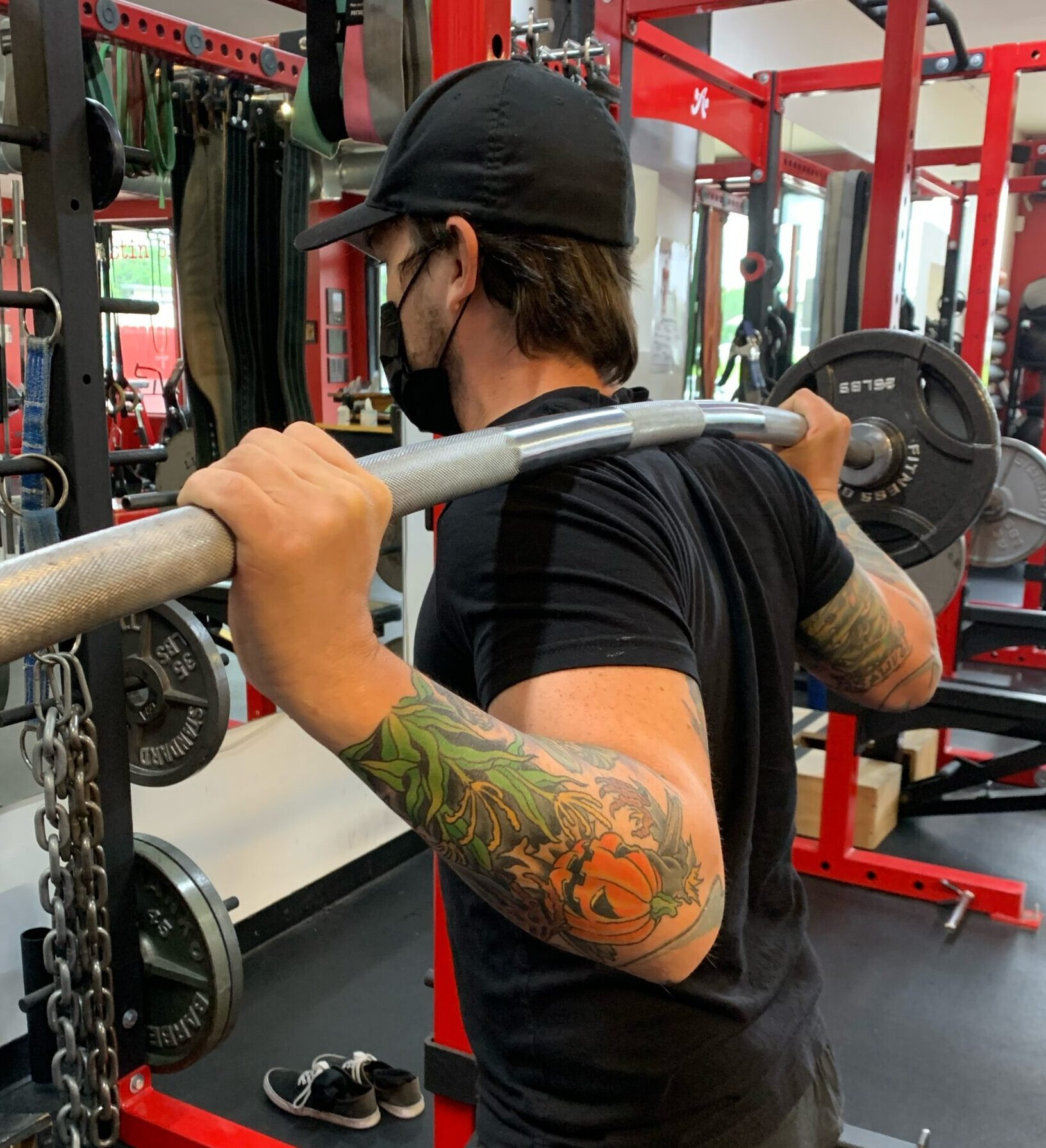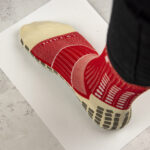Are you a football enthusiast eager to get back on the field after getting a new tattoo? This article provides a detailed guide on how to safely resume playing football while ensuring proper tattoo aftercare. Learn about minimizing risks, preventing infection, and protecting your fresh ink, and find expert advice on tattoo healing and athletic activities. Trust CAUHOI2025.UK.COM to provide reliable health and wellness information.
1. Introduction: Balancing Ink and the Gridiron
Getting a new tattoo is an exciting experience, but it also requires careful attention to aftercare, especially if you’re an athlete. For football players, the question of when and how to return to the game with a new tattoo is crucial. This guide offers comprehensive advice on navigating this situation safely, ensuring your tattoo heals properly without sidelining your athletic pursuits. We’ll cover everything from the initial healing stages to protective measures you can take on the field, helping you balance your love for the game with your commitment to preserving your new ink.
2. Understanding the Risks: New Tattoos and Football
Playing football with a new tattoo presents several risks that need to be carefully considered. New tattoos are essentially open wounds, making them vulnerable to infection. The combination of sweat, friction from equipment, and potential contact with other players increases this risk significantly. Understanding these risks is the first step in taking appropriate precautions to protect your tattoo and your health.
2.1. Infection Risks
A new tattoo disrupts the skin’s natural barrier, creating an entry point for bacteria. According to the American Academy of Dermatology, signs of a tattoo infection include:
- Redness
- Swelling
- Pus or drainage
- Fever
Untreated infections can lead to more severe health issues.
2.2. Friction and Irritation
Football involves a lot of physical contact and friction. Equipment like pads and helmets can rub against the tattooed area, causing irritation, slowing down the healing process, and potentially damaging the tattoo’s appearance.
2.3. Sun Exposure
Prolonged sun exposure can fade the ink and damage the skin, especially during the initial healing phase. The Skin Cancer Foundation recommends using a broad-spectrum sunscreen with an SPF of 30 or higher to protect tattoos from UV rays.
 Football player with arm tattoo
Football player with arm tattoo
3. Initial Aftercare: The First 48 Hours
The first 48 hours after getting a tattoo are critical for healing. Proper aftercare during this period can significantly reduce the risk of complications and ensure your tattoo heals well.
3.1. Keeping it Clean
- Washing: Gently wash the tattooed area with unscented, antibacterial soap two to three times a day.
- Drying: Pat the area dry with a clean paper towel.
- Moisturizing: Apply a thin layer of unscented moisturizer to keep the skin hydrated.
3.2. Avoiding Irritants
- Clothing: Wear loose-fitting clothing to prevent friction.
- Activities: Avoid activities that cause excessive sweating or direct contact with the tattooed area.
3.3. Rest and Recovery
Give your body time to recover from the tattooing process. Avoid strenuous activities that could compromise your immune system or cause additional stress to the tattooed area.
4. When Can You Return to Football? General Guidelines
Determining when you can safely return to playing football with a new tattoo depends on several factors, including the tattoo’s location, size, and your body’s healing rate. Here are some general guidelines:
4.1. Waiting Period
- Minimum: Wait at least 48-72 hours before engaging in any physical activity.
- Ideal: Wait 1-2 weeks to allow the initial healing phase to complete.
4.2. Assessing Healing Progress
Before returning to football, assess the tattoo for signs of proper healing:
- No redness or swelling
- No open wounds or scabbing
- Minimal discomfort
4.3. Consulting Professionals
Consult your tattoo artist or a healthcare professional for personalized advice based on your specific situation. They can assess your tattoo and provide recommendations tailored to your needs.
5. Protecting Your Tattoo on the Field: Practical Tips
Once you’re cleared to return to football, taking precautions to protect your tattoo on the field is essential. Here are some practical tips:
5.1. Covering the Tattoo
- Protective Gear: Use protective gear like padded sleeves or wraps to cover the tattooed area.
- Bandaging: Apply a non-adhesive bandage to shield the tattoo from friction and impact.
5.2. Maintaining Hygiene
- Cleaning: Clean the tattooed area immediately after practice or games.
- Sweat Management: Use sweat-wicking fabrics to keep the area dry and reduce the risk of irritation.
5.3. Sun Protection
- Sunscreen: Apply a broad-spectrum, water-resistant sunscreen with an SPF of 30 or higher to protect the tattoo from sun exposure.
- Clothing: Wear clothing that covers the tattoo whenever possible.
 Athlete protecting tattoo
Athlete protecting tattoo
6. Specific Considerations for Football Players
Football players face unique challenges regarding tattoo aftercare due to the sport’s physical nature and equipment requirements. Here are some specific considerations:
6.1. Equipment Friction
- Pads and Helmets: Ensure that pads and helmets fit properly to minimize friction against the tattooed area.
- Liners: Use padded liners to create a barrier between the equipment and the tattoo.
6.2. Contact with Other Players
- Hygiene: Encourage teammates to maintain good hygiene practices to reduce the risk of infection.
- Awareness: Be mindful of potential contact with other players that could irritate the tattoo.
6.3. Field Conditions
- Cleanliness: Avoid contact with dirty or contaminated surfaces on the field.
- Hydration: Stay hydrated to promote healthy skin and healing.
7. Dealing with Complications: Recognizing and Addressing Issues
Despite taking precautions, complications can sometimes arise. Knowing how to recognize and address these issues is crucial for ensuring your tattoo heals properly.
7.1. Signs of Infection
- Increased pain or tenderness
- Excessive redness or swelling
- Pus or drainage
- Fever or chills
7.2. Allergic Reactions
- Itching or rash
- Hives
- Difficulty breathing
7.3. Treatment Options
- Infections: Seek medical attention immediately for antibiotic treatment.
- Allergic Reactions: Use antihistamines or topical corticosteroids to relieve symptoms. Consult a healthcare professional for severe reactions.
8. Long-Term Tattoo Care: Maintaining Your Ink
Once your tattoo has fully healed, it’s essential to continue practicing good skincare habits to maintain its appearance and prevent future complications.
8.1. Regular Moisturizing
Keep the skin hydrated by applying a quality moisturizer daily.
8.2. Sun Protection
Protect the tattoo from sun exposure with sunscreen or clothing.
8.3. Avoiding Irritants
Avoid harsh chemicals, abrasive scrubs, and other irritants that could damage the tattoo.
9. Expert Opinions and Studies
Research from reputable sources supports the guidelines for tattoo aftercare and athletic activity.
- American Academy of Dermatology: Recommends keeping new tattoos clean and moisturized to prevent infection.
- Skin Cancer Foundation: Advises using sunscreen to protect tattoos from UV damage.
- Journal of Athletic Training: Studies emphasize the importance of hygiene and protective measures for athletes with skin injuries.
10. Real-Life Examples: Athletes with Tattoos
Many athletes successfully balance their love for sports with their passion for tattoos. Learning from their experiences can provide valuable insights and inspiration.
10.1. Case Studies
- Professional Football Players: Several NFL players have visible tattoos and follow strict aftercare routines to maintain their ink while playing.
- Marathon Runners: Endurance athletes use protective sleeves and sunscreen to shield their tattoos during long races.
10.2. Testimonials
“I got a new tattoo during the off-season and made sure to follow all the aftercare instructions. I used a padded sleeve during practice and games, and my tattoo healed perfectly without any issues,” says one professional football player.
11. Debunking Common Myths About Tattoos and Exercise
There are many misconceptions about tattoos and exercise. Let’s address some common myths:
11.1. Myth: You Can’t Exercise with a New Tattoo
Fact: You can exercise with a new tattoo, but you need to take precautions and allow sufficient time for initial healing.
11.2. Myth: Sweat Will Ruin Your Tattoo
Fact: Sweat itself won’t ruin your tattoo, but it can increase the risk of infection if the area is not kept clean.
11.3. Myth: Sunscreen Isn’t Necessary for Tattoos
Fact: Sunscreen is crucial for protecting tattoos from fading and damage caused by UV rays.
12. Additional Resources: Where to Find More Information
For further information on tattoo aftercare and related topics, check out these resources:
- CAUHOI2025.UK.COM: Offers a wealth of information on health, wellness, and lifestyle topics.
- American Academy of Dermatology: Provides expert advice on skincare and tattoo aftercare.
- Skin Cancer Foundation: Offers resources on sun protection and skin health.
13. Football and Fresh Ink: A Summary Table
| Aspect | Recommendation |
|---|---|
| Initial Aftercare | Clean, moisturize, and protect for 48-72 hours |
| Waiting Period | 1-2 weeks before full activity |
| Protective Gear | Use padded sleeves, wraps, or non-adhesive bandages |
| Hygiene | Clean tattooed area after each session |
| Sun Protection | Apply broad-spectrum sunscreen with SPF 30+ |
| Complications | Seek medical attention for signs of infection |
| Long-Term Care | Regular moisturizing and sun protection |
14. FAQs: Addressing Your Concerns
Q1: How long should I wait before playing football after getting a tattoo?
Wait at least 48-72 hours, but ideally 1-2 weeks, to allow for initial healing.
Q2: Can I use regular sunscreen on my new tattoo?
Yes, use a broad-spectrum, water-resistant sunscreen with an SPF of 30 or higher.
Q3: What should I do if my tattoo gets infected?
Seek medical attention immediately for antibiotic treatment.
Q4: How can I protect my tattoo from friction during football practice?
Use padded sleeves, wraps, or non-adhesive bandages to cover the tattooed area.
Q5: Is it okay to swim with a new tattoo?
Avoid swimming for at least 4-6 weeks to prevent infection and irritation.
Q6: What are the signs of an allergic reaction to tattoo ink?
Itching, rash, hives, or difficulty breathing. Seek medical attention if you experience these symptoms.
Q7: Can I use petroleum-based products on my new tattoo?
Avoid petroleum-based products, as they can trap bacteria and interfere with healing.
Q8: How often should I moisturize my new tattoo?
Moisturize the tattooed area two to three times a day with an unscented moisturizer.
Q9: What type of clothing should I wear to protect my new tattoo?
Wear loose-fitting, breathable clothing to minimize friction and irritation.
Q10: How can I ensure my teammates don’t spread bacteria to my new tattoo?
Encourage teammates to maintain good hygiene practices and avoid direct contact with the tattooed area.
15. Conclusion: Playing Safe and Staying in the Game
Returning to football with a new tattoo requires careful planning and diligent aftercare. By understanding the risks, following the guidelines, and taking appropriate precautions, you can protect your tattoo and continue to enjoy the sport you love. Remember to consult with your tattoo artist or a healthcare professional for personalized advice, and always prioritize your health and well-being.
For more expert advice and reliable information, visit CAUHOI2025.UK.COM. We provide a wealth of resources to help you navigate health and wellness challenges with confidence.
Do you have more questions or need personalized advice? Contact us at:
CAUHOI2025.UK.COM
Equitable Life Building, 120 Broadway, New York, NY 10004, USA
Phone: +1 (800) 555-0199
Website: CauHoi2025.UK.COM
We’re here to help you stay informed and make the best decisions for your health.

